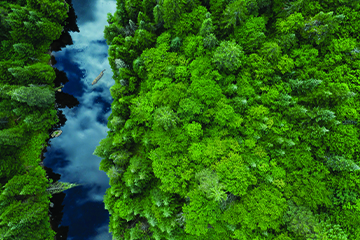Nature-based climate solutions
Nature-based solutions uses tools such as restoration, conservation, and management of wetlands, grasslands, coastlines and forests, to mitigate and adapt to the effects of climate change while supporting biodiversity.
Learn about how you can make a tangible difference by helping to protect and conserve nature.
Canada’s nature-based climate solutions
Learn how these solutions play an important role in our everyday lives and what you can do to help.

Grasslands
Grasslands are rich in biodiversity, home to a wide array of plants and wildlife, and have an important role in storing carbon.

Coastlines
Canada has the longest coastline in the world, linking the Atlantic, Arctic, and Pacific oceans.
Canada has roughly:

24% of the world’s boreal forests

1.5 million square kilometres of wetlands — around 24% of the world’s remaining total

2 million lakes and the world’s longest coastline
Our commitment
Canada is committed to protecting 30 % of its lands and 30 % of its oceans by 2030, using nature-based solutions to fight climate change, and reaching net-zero greenhouse gas emissions by 2050.
The Natural Climate Solutions Fund is one way Canada is working to achieve this commitment.
Programs and resources
Find more information about Canada’s nature-based climate solutions.
- Nature Smart Climate Solutions Fund
- Indigenous-led Natural Climate Solutions
- Working Toward Nature-Based Climate Solutions - Nature Canada
- Towards local action on Nature-based Climate Solutions - Toolkit - Nature Canada
- 2 Billion Trees Program
- Agricultural Climate Solutions
- Funds and resources to help the environment
- National Adaptation Strategy
- Federal offset protocol: Improved forest management on private land

